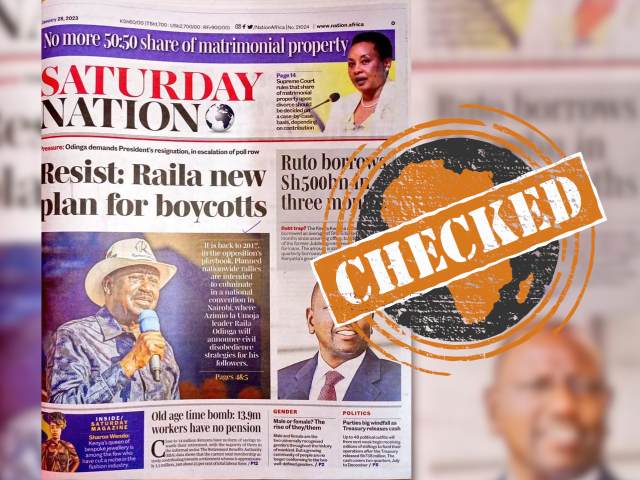IN SHORT: A tweet claims that government-subsidised fertiliser in Kenya cannot support maize growth. This is false and the accompanying photo was taken in the United States almost two years ago.
“My brothers from the Rift Valley, it turns out that the subsidized fertilizer cannot support the growth of maize after all. When we were protesting, you said you were farming. Who is laughing now? Karma is a bi*ch.”
That’s a rough translation of a tweet written mostly in Kiswahili, accompanied by an image of flattened maize plants on a farm.
The tweet, dated 2 July 2023, has received over 175,000 views and 1,700 likes. It has also been retweeted over 200 times.
The Rift Valley region in Kenya is considered a political stronghold of president William Ruto. It is also the country's leading bread basket, known for its agricultural activities, especially maize farming.
The post appears to be referring to the opposition-led protests that have been taking place on and off since March 2023, mainly over the high cost of living.
During his 2022 presidential campaign, Ruto promised to reduce high food prices. After taking office, his government decided to scrap existing maize subsidies and instead focus on increasing production.
This led to subsidised fertiliser, meaning farmers could purchase the product at a reduced price at certain stores. Initially, take-up was low and there were concerns about the quality of the fertiliser. But the ministry of agriculture defended it, and fertiliser sales later increased.
By early June 2023, it was reported that only about a third of farmers had bought it, and some of those interviewed said they had no problems with crop growth.
As the protests continued, Ruto maintained that they would not reduce food prices and that the focus should be on increasing agricultural production.
Photos were circulated of him inspecting maize growth on his farm. The government also announced plans to import maize to ease a supply shortage.
The tweet and photo suggest that the government-subsidised fertiliser is of poor quality and has failed to support maize growth.
If true, this claim could cause unnecessary concern and panic among maize farmers who may fear for their investments. It could also cause more Kenyans to distrust the government.
But is the claim true? We checked.

Photo taken in the US
A reverse image search shows that the photo was taken in August 2020 in the US state of Indiana. The plants were flattened by a powerful wind storm, known as a derecho.
Furthermore, if the fertiliser was really flattening maize as claimed, there would probably have been widespread coverage of such cases. But we could not find any credible reports of this.
The claim that the photo shows flattened maize in Kenya caused by low-quality fertiliser is false.
Republish our content for free
For publishers: what to do if your post is rated false
A fact-checker has rated your Facebook or Instagram post as “false”, “altered”, “partly false” or “missing context”. This could have serious consequences. What do you do?
Click on our guide for the steps you should follow.
Publishers guideAfrica Check teams up with Facebook
Africa Check is a partner in Meta's third-party fact-checking programme to help stop the spread of false information on social media.
The content we rate as “false” will be downgraded on Facebook and Instagram. This means fewer people will see it.
You can also help identify false information on Facebook. This guide explains how.



Add new comment